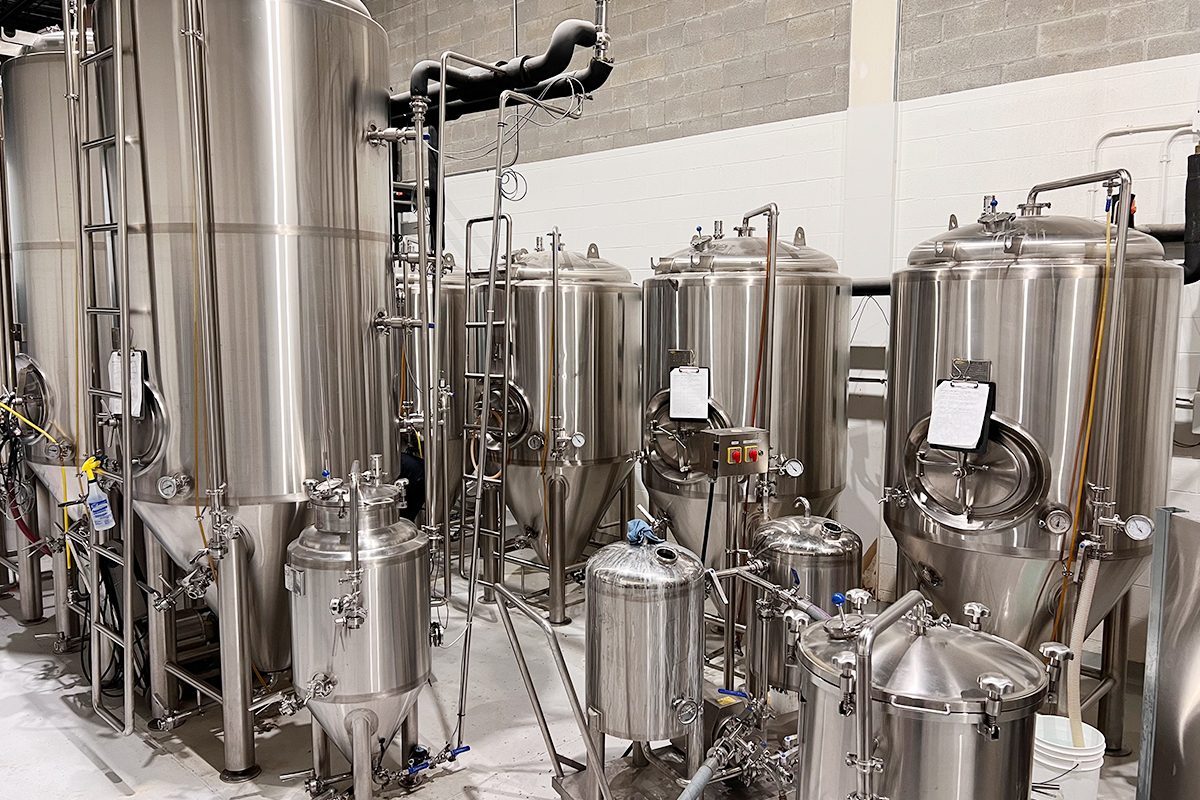
Fermentation Tank Shape: Effects on Fermentation
Fermentation is a critical process in industries like brewing, winemaking, and distillation, where microorganisms such as yeast convert sugars into alcohol, carbon dioxide, and other byproducts. The design of fermentation tanks significantly impacts the efficiency and quality of this process. Among the various factors that influence fermentation, the shape of the fermentation tank determines how the yeast behaves, how gases are exchanged, and how heat is distributed in the liquid. Whether using a traditional cylindroconical tank, a horizontal tank, or a custom shape, each design affects the fermentation dynamics in unique ways. Understanding these effects can help optimize fermentation outcomes, improve product quality, and maximize production efficiency. This article explores how different fermentation tank shapes influence the fermentation process, offering insights into how tank geometry can improve temperature control, yeast activity, and overall product characteristics in both small and large-scale fermentation systems.
Complete Guide
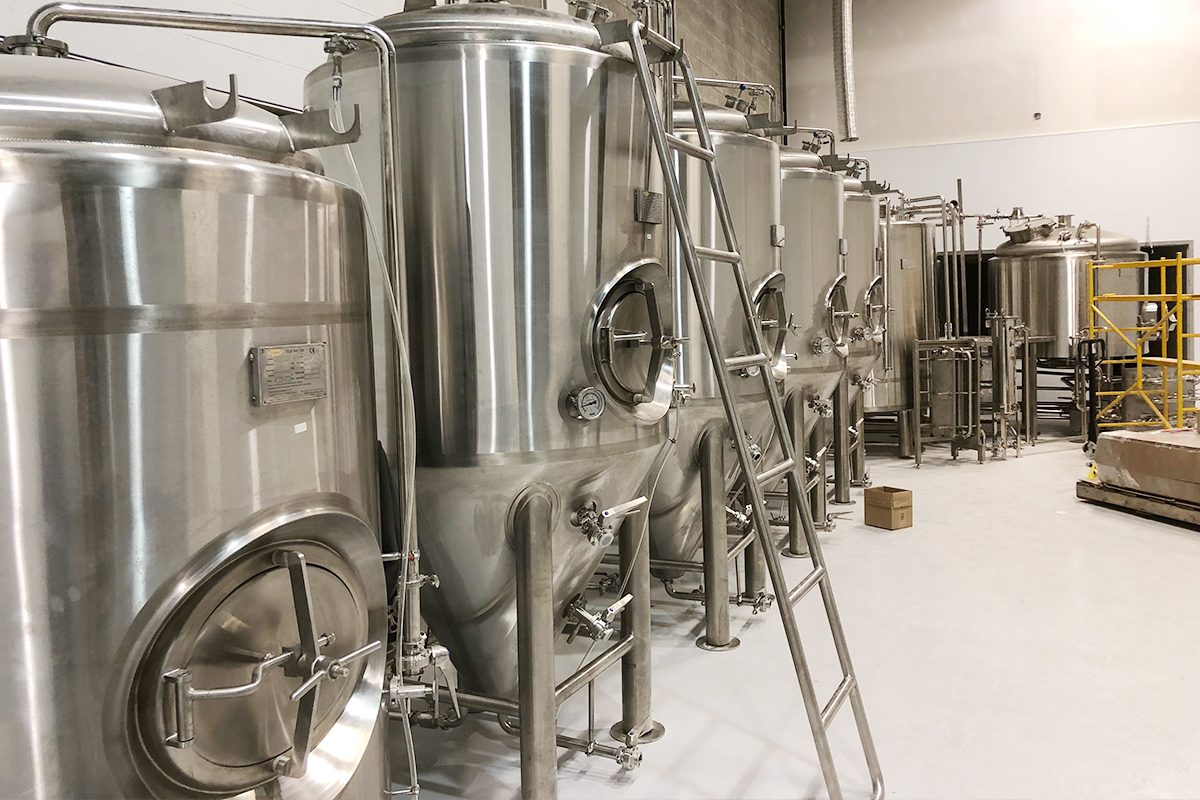
Introduction to Fermentation Tanks
Fermentation tanks are essential vessels in the brewing process, playing a key role in converting sugars into alcohol, carbon dioxide, and other byproducts through the action of yeast. ZYB Craft, as a professional brewery equipment provider, understands that the design and shape of these tanks are critical factors influencing the quality and efficiency of fermentation.
Fermentation tanks come in a variety of shapes and sizes, each offering unique benefits depending on the type of fermentation required. Cylindroconical tanks, horizontal tanks, and custom-shaped vessels all impact fermentation dynamics, affecting temperature control, yeast activity, and the overall fermentation environment. Choosing the right tank shape can optimize product consistency, reduce fermentation times, and improve the overall brewing process.
In the brewing industry, proper fermentation tank design can help achieve consistent results, enhance flavor, and maintain product quality, so it is a core consideration for breweries of all sizes.
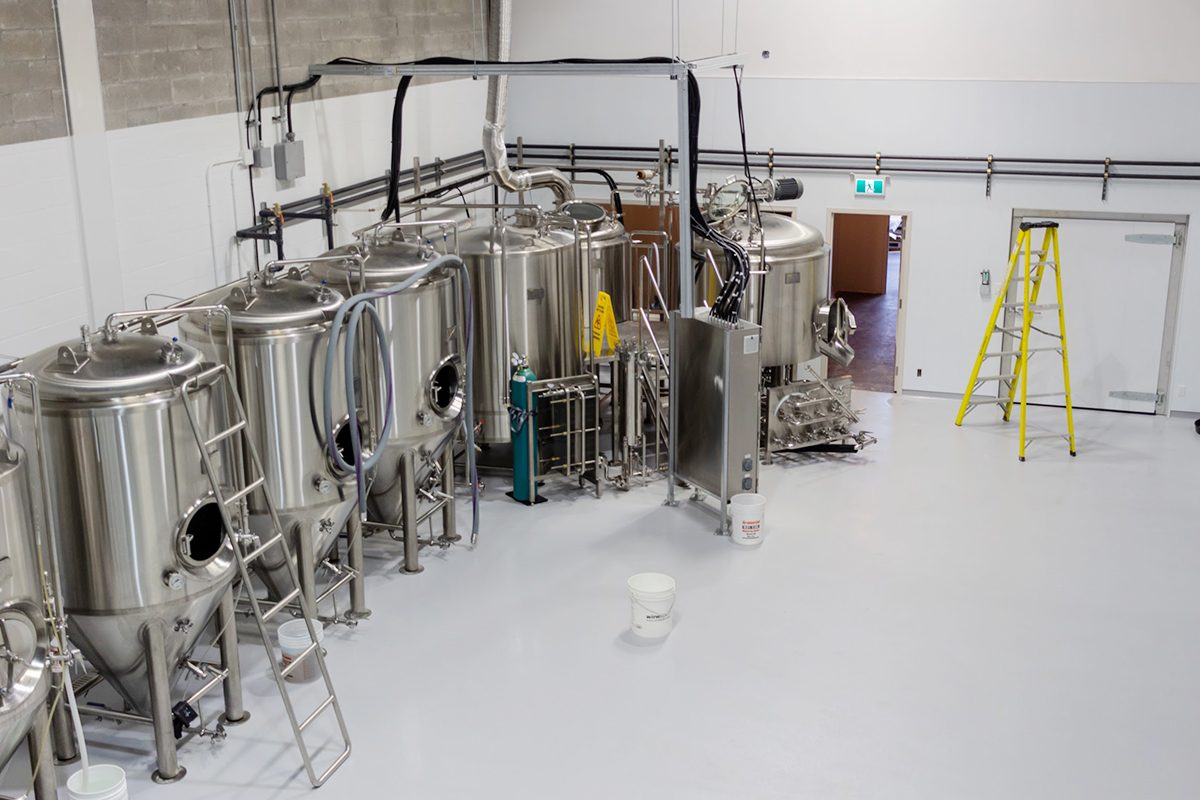
Importance of Tank Shape in Fermentation
The shape of the fermentation tank affects key factors during the brewing process, such as yeast behavior, temperature regulation, and gas exchange. The fermentation tank shape influences how yeast moves within the fermenting liquid, which directly affects fermentation efficiency and the final flavor profile. For instance, cylindroconical tanks promote the sedimentation of yeast and other solids at the conical base, allowing for easy yeast collection and improved product clarity. Horizontal tanks, on the other hand, provide a larger surface area for gas exchange, ideal for producing lagers with enhanced flavor development.
Temperature control is another critical factor. Vertical tanks offer more efficient cooling, while horizontal tanks can enhance cold fermentation processes. The choice of tank shape, therefore, not only impacts production efficiency but also the overall quality of the final product, making it a key consideration in the brewery’s operations.
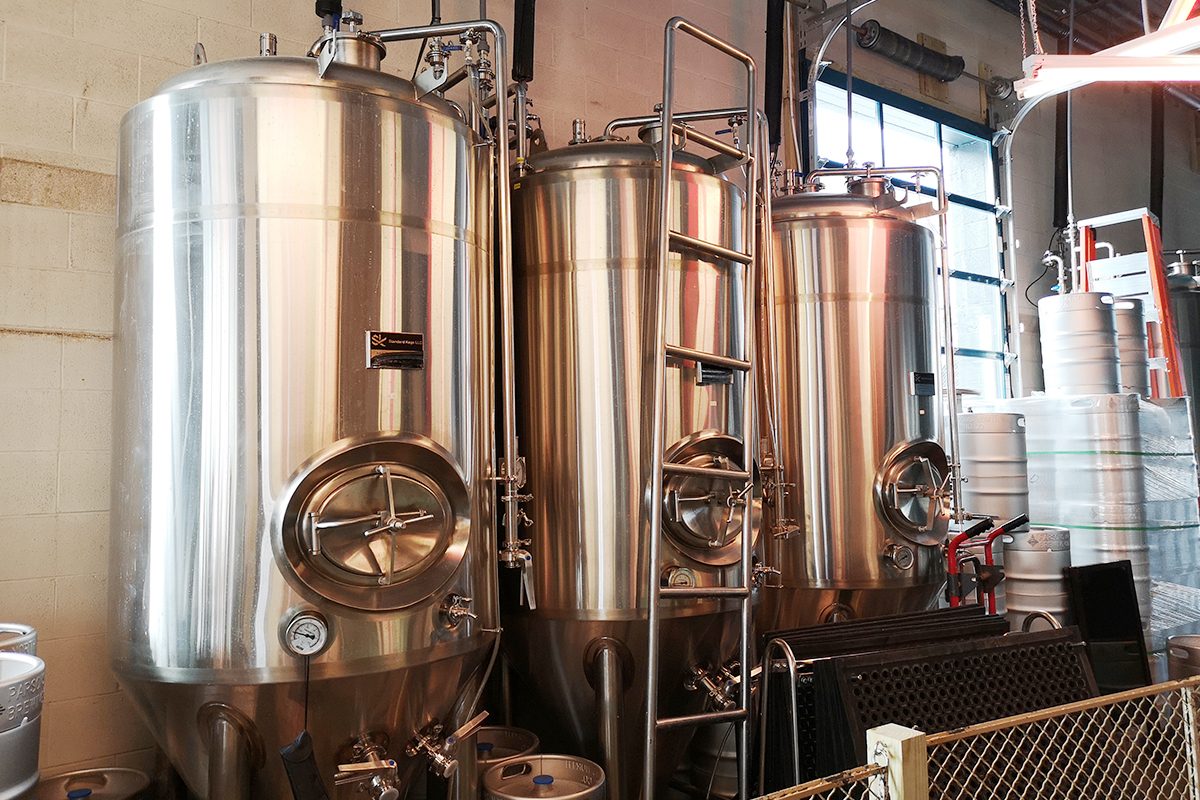
Types of Fermentation Tank Shapes
When it comes to fermentation, the shape of the tank plays a significant role in influencing how yeast behaves, how efficiently temperature is controlled, and the overall quality of the finished product. ZYB Craft provides a range of fermentation tank shapes designed to meet the diverse needs of breweries. Here are the most common tank shapes and their effects on the fermentation process:
Cylindroconical Tanks
Cylindroconical tanks are the industry standard in modern brewing. Their cylindrical body with a conical bottom promotes efficient yeast sedimentation, allowing yeast and other solids to collect at the bottom of the tank. This shape simplifies yeast harvesting, improves clarity, and enhances product quality. The vertical orientation of these tanks also helps maintain consistent temperatures, essential for controlled fermentation. These tanks are ideal for both small and large-scale production due to their versatility and ease of cleaning.
Horizontal Tanks
Horizontal tanks, often used in the production of lagers, have a larger surface area relative to their volume, which enhances the interaction between the liquid and the gas phase. This promotes more consistent gas exchange, contributing to specific flavor profiles, especially in slow, cold fermentations. While they take up more floor space compared to vertical tanks, their broad shape allows for even cooling and slower yeast sedimentation, making them suitable for long-term fermentation processes.
Vertical Tanks
Vertical tanks, similar to cylindroconical tanks but without the conical bottom, are commonly used in smaller breweries or for specialized fermentation processes. Their tall, narrow design provides excellent temperature control and efficient use of space. Vertical tanks can be equipped with cooling jackets to help regulate fermentation temperatures, making them well-suited for products requiring precise temperature management. However, they may not provide the same ease of sediment removal as cylindroconical tanks.
Spherical Tanks
Spherical tanks are less common but offer unique advantages for certain fermentation processes. The round shape promotes uniform pressure distribution, making them suitable for fermenting products like sparkling wines and other beverages that require pressurization. Spherical tanks also facilitate even heat distribution, which can help maintain consistent fermentation temperatures. However, their manufacturing complexity and cost make them less prevalent in the brewing industry.
Custom Shapes
For breweries with specific production needs, custom-shaped fermentation tanks provide tailored solutions. Custom designs can be engineered to optimize space, enhance cooling efficiency, or meet the unique requirements of particular brewing styles. ZYB Craft offers customizable fermentation tanks that can accommodate unusual brewing conditions, allowing breweries to experiment with non-traditional fermentation processes. Whether for aesthetic reasons or functional improvements, custom shapes provide flexibility in brewing operations.
Each tank shape presents distinct advantages and challenges, and the choice of shape should align with the brewery’s production goals, space constraints, and the desired characteristics of the final product. At ZYB Craft, we help breweries select and design the right fermentation tanks to ensure optimal performance and quality.
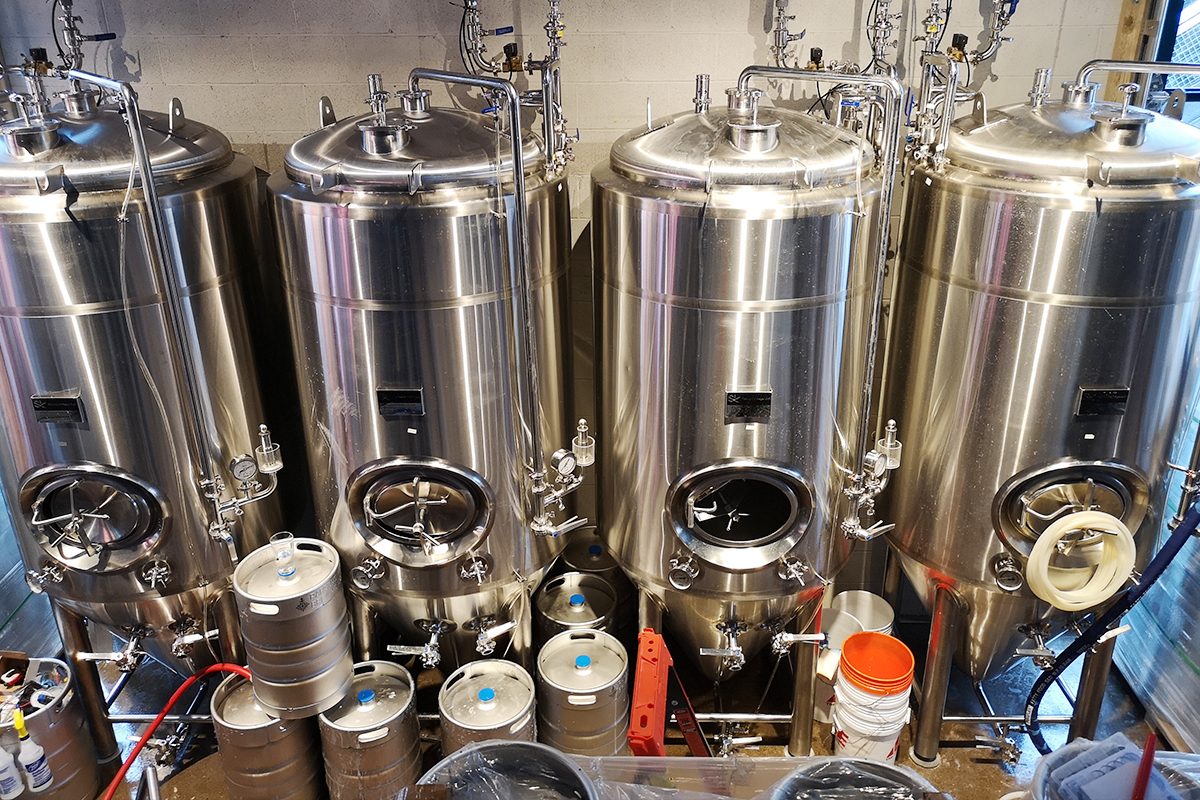
Fluid Dynamics in Fermentation Tanks
Fluid dynamics in fermentation tanks play a critical role in determining how efficiently yeast and other microorganisms interact with the wort or must, influencing the overall fermentation process. Understands that the movement of fluids within the tank, whether through natural or forced convection, can significantly impact fermentation quality. The shape of the tank is a major factor in how fluid movement is managed, and breweries can optimize their processes by choosing the right tank design.
Natural Convection
Natural convection occurs when fluid movement is driven by temperature differences within the tank. During fermentation, heat is generated as a byproduct of yeast activity. The warmer liquid rises to the top, while the cooler liquid sinks to the bottom, creating a circulating flow. In tall, vertical tanks, such as cylindroconical tanks, natural convection helps maintain even temperature distribution throughout the liquid, which can enhance yeast activity and lead to more consistent fermentation.
In horizontal tanks, natural convection is less pronounced because the temperature differences tend to settle more slowly across the broader surface area. As a result, cooling systems often need to work harder to maintain uniform temperatures, especially in larger tanks.
Forced Convection
Forced convection refers to the intentional movement of fluids within the fermentation tank using external equipment, such as agitators or pumps. This is typically used in processes where higher fermentation rates or enhanced mixing are required. Forced convection ensures that the yeast is evenly distributed and that the liquid maintains a consistent temperature throughout the tank.
Custom-shaped fermentation tanks may benefit from forced convection in applications that require specific temperature and mixing controls. This type of fluid movement is particularly useful when fermenting large batches or when precise temperature control is needed for certain types of beer.
Influence of Tank Shape on Fluid Movement
The shape of the fermentation tank plays a crucial role in how fluids move within it, influencing both natural and forced convection. Cylindroconical tanks, with their tall, narrow design, naturally promote more efficient natural convection. The conical bottom helps concentrate yeast and solids at the base, aiding sedimentation and improving clarity.
Horizontal tanks, in contrast, distribute liquid over a larger surface area, which can slow fluid movement and natural convection. However, this shape is ideal for lagering and long-term fermentation processes where slower yeast activity and minimal agitation are preferred.
Spherical and custom-shaped tanks provide unique fluid dynamics. Spherical tanks promote uniform heat and pressure distribution, leading to even fluid movement, while custom shapes can be engineered to enhance fluid dynamics for specialized brewing needs.
In summary, understanding fluid dynamics can help in choosing the correct fermentation tank shape. By choosing the optimal design for natural and forced convection, breweries can improve temperature control, yeast activity, and product consistency.
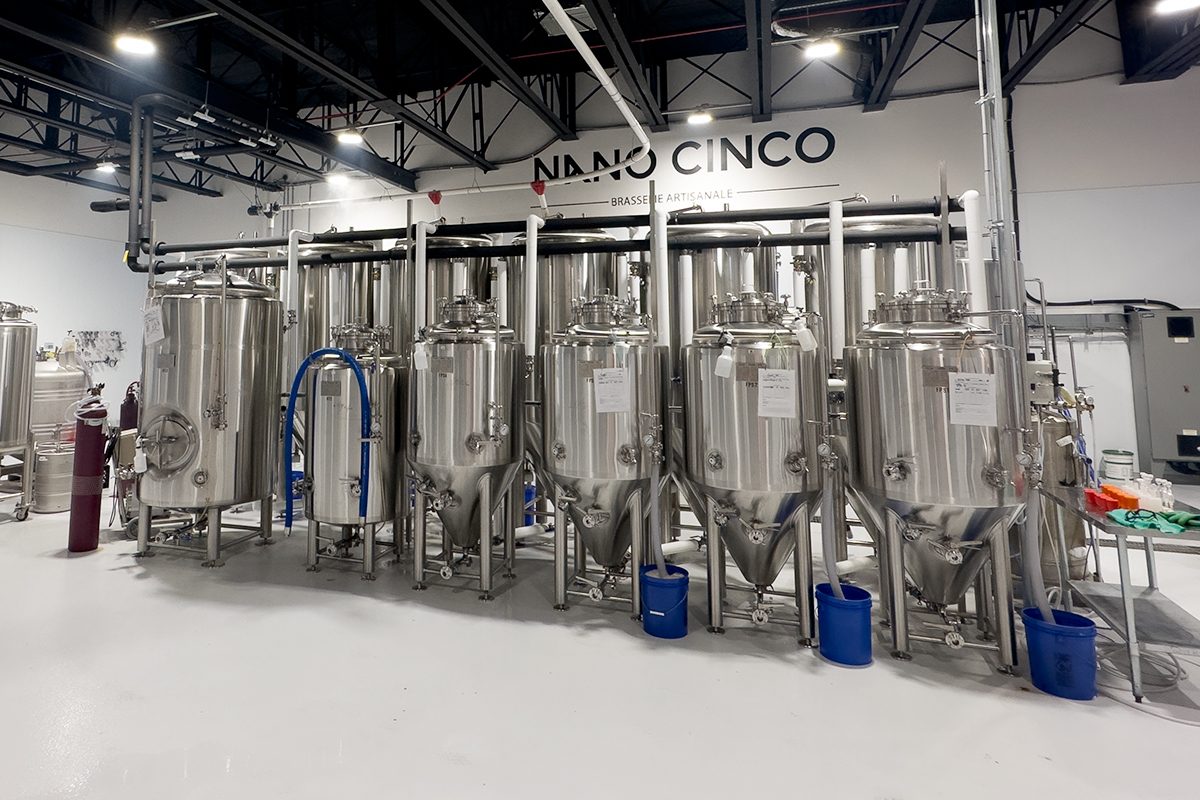
Yeast Activity and Tank Shape
Yeast is the driving force behind fermentation, converting sugars into alcohol and other byproducts. The shape of the fermentation tank plays a critical role in influencing yeast behavior, from how it is distributed throughout the liquid to how it settles after fermentation. Here’s how different shapes affect key aspects of yeast performance:
Yeast Distribution
The distribution of yeast within the fermentation tank can significantly impact the efficiency and consistency of fermentation. In cylindroconical tanks, yeast is often more evenly dispersed due to the vertical structure, allowing it to interact with the wort or must more uniformly. The tall, narrow design helps ensure that the yeast remains in suspension longer, leading to a more consistent fermentation process.
In horizontal tanks, yeast tends to settle more quickly due to the larger surface area. This can result in less uniform yeast activity unless mechanical agitation or forced convection is applied. Custom-shaped tanks can be designed to promote better yeast distribution, depending on the specific fermentation goals.
Oxygenation
Oxygenation is a critical step in the early stages of fermentation, as yeast requires oxygen to grow and multiply. Tank shape can influence how effectively oxygen is introduced and distributed throughout the fermenting liquid. Cylindroconical tanks, with their vertical orientation, allow oxygen to rise and spread more efficiently, leading to better yeast health and faster fermentation starts.
In horizontal tanks, oxygen may not distribute as evenly due to the broader surface area, which can limit yeast’s access to oxygen. This can affect the overall fermentation rate and flavor development. Custom tanks, designed with specific oxygenation needs in mind, can offer tailored solutions to ensure optimal yeast performance.
Yeast Sedimentation
One of the most important aspects of yeast management is sedimentation—the process by which yeast settles out of the liquid after fermentation is complete. The shape of the tank has a direct influence on how efficiently this occurs. Cylindroconical tanks, with their conical bottoms, are ideal for yeast sedimentation. The yeast naturally collects at the bottom, making it easy to harvest and reuse for subsequent batches or to remove it from the finished product.
In horizontal tanks, yeast sedimentation is slower and more dispersed, which can complicate the separation process. Spherical and custom-shaped tanks may offer varying degrees of yeast sedimentation efficiency depending on their design, with some shapes promoting better natural sedimentation than others.
Overall, tank shape plays a crucial role in optimizing yeast activity, from distribution and oxygenation to sedimentation. By selecting the appropriate fermentation tank, breweries can ensure that yeast performance is maximized, leading to improved product quality and fermentation efficiency.
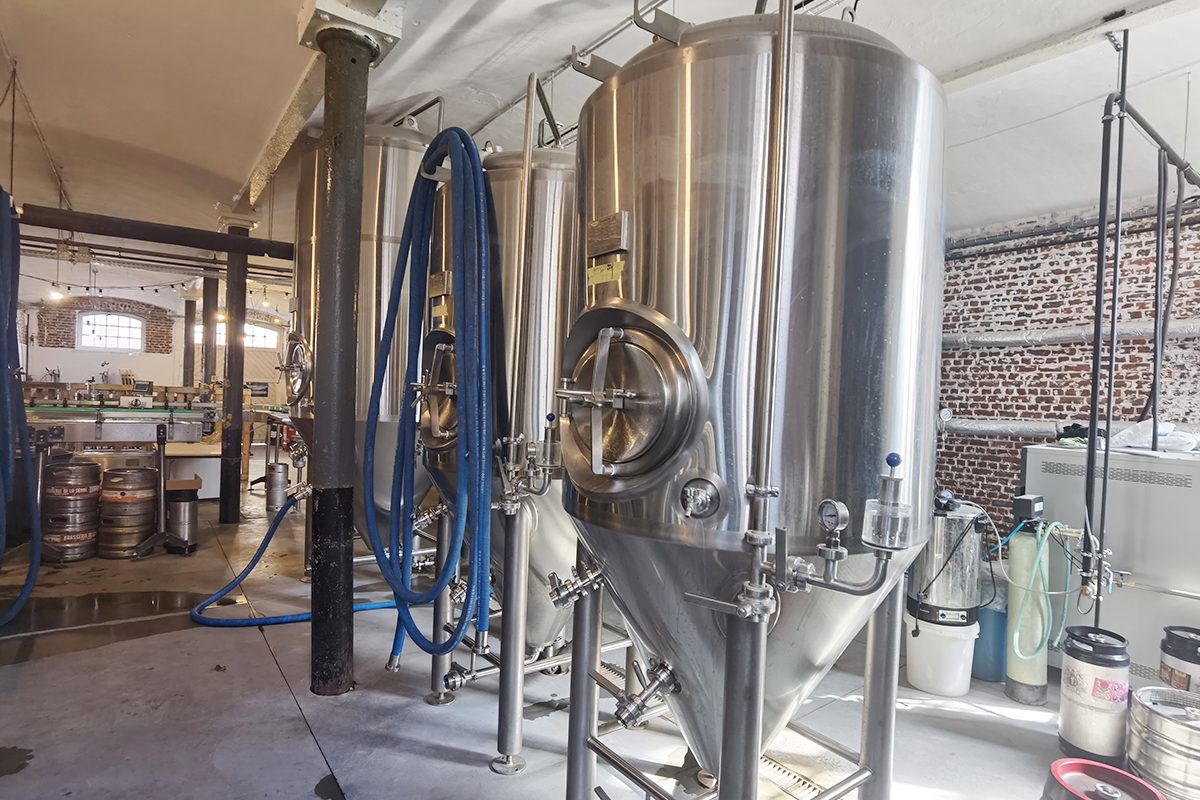
Temperature Control and Tank Shape
Temperature control is one of the most critical factors in the fermentation process, directly impacting yeast activity, flavor development, and overall fermentation efficiency. The shape of the fermentation tank can greatly influence how heat is distributed and how efficiently the cooling system operates. ZYB Craft, a professional brewery equipment provider, ensures that tank design optimizes temperature control to produce high-quality brews consistently. Below are the key aspects of how tank shape affects heat distribution and cooling efficiency.
Heat Distribution
During fermentation, heat is naturally generated by yeast activity. In cylindroconical tanks, the tall and narrow design promotes even heat distribution throughout the liquid, ensuring that temperature is consistent from top to bottom. This temperature uniformity is crucial for maintaining optimal fermentation conditions, as it allows the yeast to work at a steady rate without overheating or cooling too quickly.
Horizontal tanks, due to their broader surface area, can experience uneven heat distribution, especially in larger volumes. The liquid closer to the cooling surfaces may remain cooler, while the center of the tank could retain more heat. This uneven temperature can slow down fermentation or lead to flavor inconsistencies in the final product. However, with proper cooling system integration, this effect can be minimized.
Cooling Efficiency
Cooling efficiency is another critical factor influenced by tank shape. Cylindroconical tanks are typically equipped with cooling jackets that cover the sides of the tank, allowing for efficient heat removal. The vertical orientation ensures that the cooling system is in close contact with the liquid, promoting quick and uniform temperature reduction. This makes cylindroconical tanks ideal for managing active fermentation phases when precise temperature control is necessary.
In horizontal tanks, the larger surface area allows for more contact with cooling elements, which can be beneficial for long, slow fermentation processes like lagering. However, the cooling effect may not be as evenly distributed as in vertical tanks, requiring additional cooling points to maintain consistency. Custom-shaped tanks, designed for specific cooling needs, can provide solutions that improve cooling efficiency based on the type of fermentation being carried out.
By choosing the right fermentation tank shape, breweries can enhance their ability to control temperature and ensure consistent, high-quality fermentation. Whether using cylindroconical, horizontal, or custom tanks, ZYB Craft offers solutions that maximize heat distribution and cooling efficiency to meet the unique needs of each brewery.
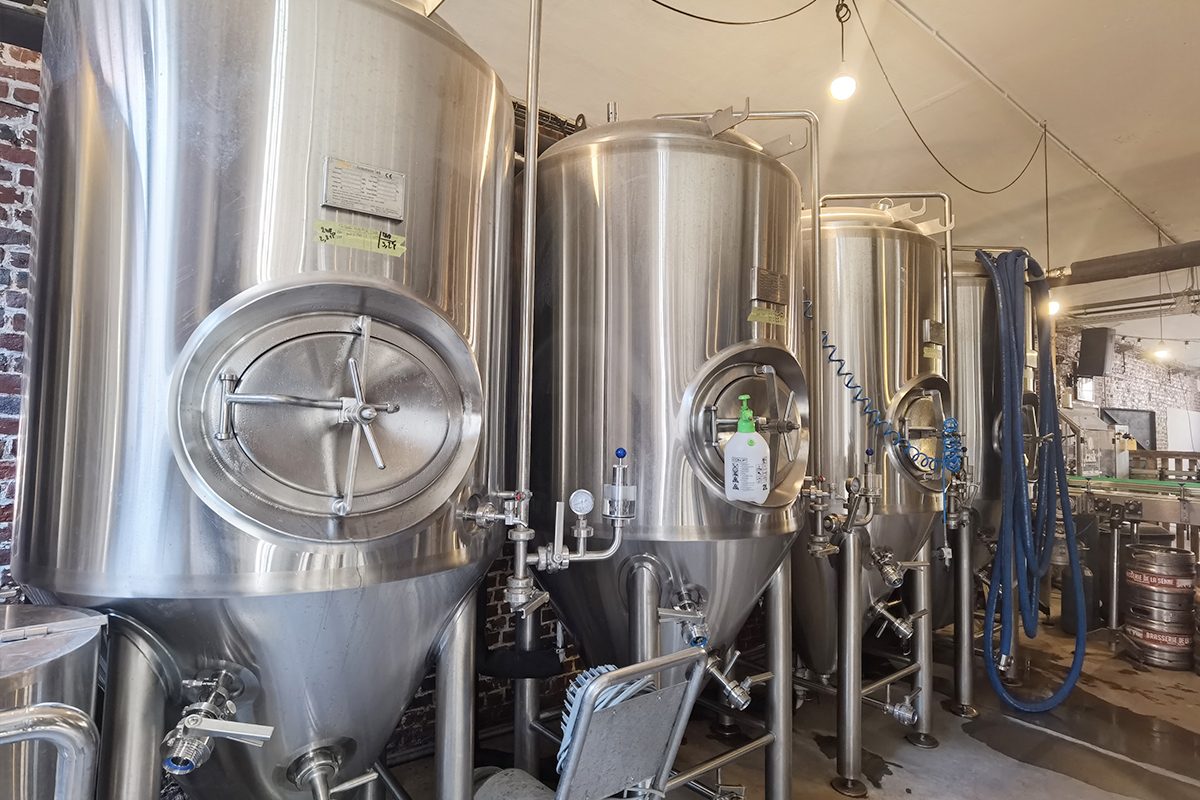
Fermentation Time and Tank Shape
The shape of a fermentation tank has a direct impact on fermentation time, influencing factors such as yeast behavior, temperature control, and gas exchange. Different tank shapes affect fermentation time in unique ways, offering breweries the ability to fine-tune their process to suit specific brewing goals.
Cylindroconical Tanks
Cylindroconical tanks are the industry standard for most breweries due to their ability to promote efficient fermentation. The tall, narrow shape enhances yeast activity by keeping the yeast in suspension longer, which leads to faster fermentation times. The conical bottom also facilitates the easy removal of yeast and sediment, reducing the need for additional downtime between batches. These tanks are designed for high efficiency, allowing breweries to complete fermentations more quickly while maintaining quality.
Horizontal Tanks
Horizontal tanks, often used in lager production, typically result in slower fermentation times. The larger surface area and lower vertical height create conditions where yeast settles more gradually and natural convection is slower, leading to a slower fermentation process. This extended fermentation time can be beneficial for brewing styles that require longer conditioning periods, such as lagers, as it allows for a more delicate development of flavors. However, for breweries looking to speed up production, horizontal tanks may not be the best choice for faster fermentations.
Spherical and Custom Shapes
Spherical tanks, while less common, offer unique fermentation dynamics. The round shape allows for more uniform pressure and temperature distribution, which can lead to a steady and consistent fermentation process. While not necessarily speeding up fermentation, spherical tanks provide balanced conditions that can improve the quality and consistency of the final product. Custom-shaped tanks, designed for specific brewing requirements, can be tailored to adjust fermentation times based on the shape’s influence on fluid movement and temperature control.
Effect on Fermentation Time
The primary influence of tank shape on fermentation time comes from how well the tank supports yeast activity and temperature control. Taller, narrower tanks like cylindroconical designs are ideal for rapid fermentations, as they promote better mixing and more efficient heat dissipation. In contrast, wider tanks with a larger surface area can slow down the fermentation process due to reduced yeast suspension and slower natural convection.
The shape of the fermentation tank is an important factor in determining how long fermentation will take. By selecting the right tank shape for the type of beer being brewed, breweries can manage fermentation time more effectively, ensuring that their production process aligns with their desired output and quality. ZYB Craft provides a range of fermentation tanks designed to accommodate varying fermentation times, ensuring that breweries can achieve optimal results for each batch.
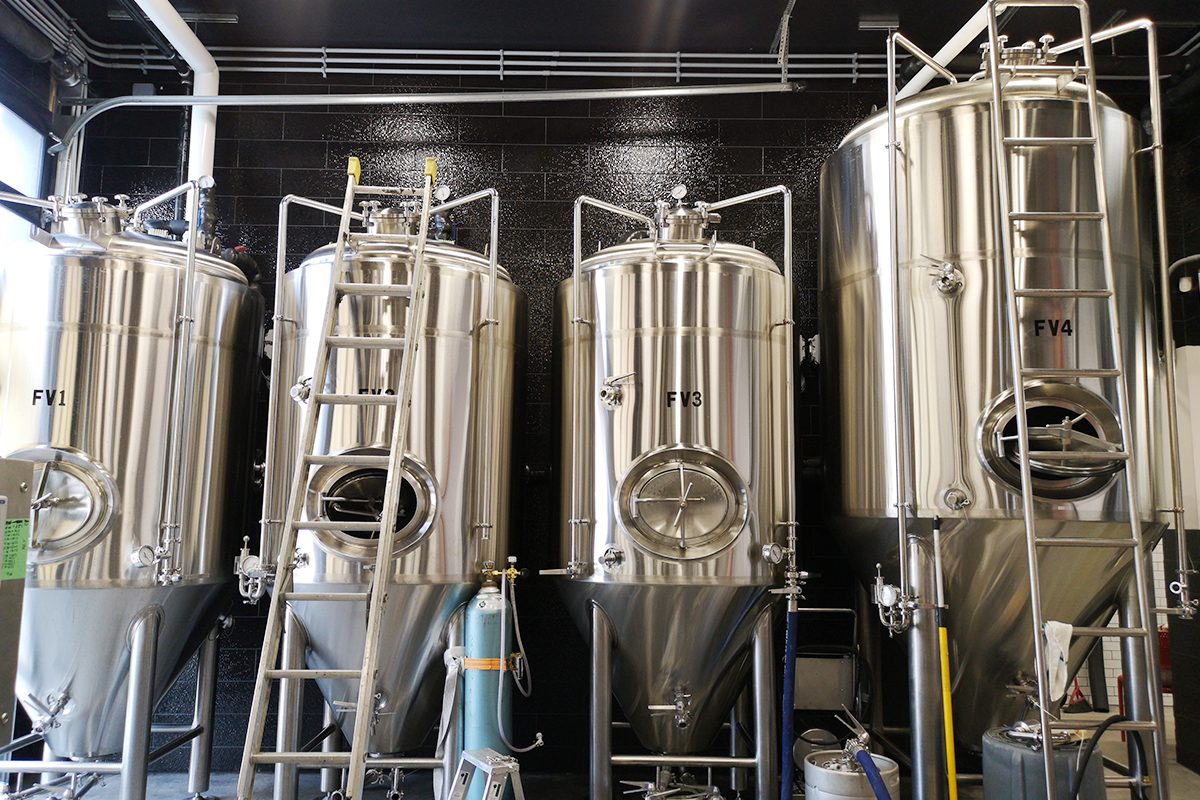
Effect of Tank Shape on Beer Styles
The shape of a fermentation tank significantly impacts how different beer styles develop during fermentation. Ale and lager fermentation, which differ in yeast behavior, temperature, and time, are influenced by the geometry of the tanks in which they are fermented. As a professional brewery equipment provider, ZYB Craft understands that selecting the appropriate tank shape can optimize the fermentation process for both ales and lagers, ensuring the desired flavor profile and quality are achieved.
Ale Fermentation
Ales are typically fermented at warmer temperatures (between 15-24°C or 60-75°F), and the yeast used in ale fermentation, Saccharomyces cerevisiae, is top-fermenting. This means that the yeast rises to the top of the fermentation vessel during the process. Cylindroconical tanks are particularly well-suited for ale fermentation due to their vertical design, which promotes yeast activity and faster fermentation times.
The tall, narrow shape of cylindroconical tanks helps keep the yeast in suspension longer, which enhances the interaction between the yeast and the wort. This leads to a more efficient fermentation and better attenuation, or conversion of sugars into alcohol. The conical bottom allows for easy removal of yeast and sediment, reducing the need for racking and improving the clarity of the final product. For ales, which are often brewed quickly to capture bright, fresh flavors, these tanks provide an ideal environment for fermentation.
Lager Fermentation
Lagers are fermented at cooler temperatures (between 7-13°C or 45-55°F), using bottom-fermenting yeast, Saccharomyces pastorianus. Lager fermentation typically takes longer than ale fermentation, and the slower process is better suited to horizontal tanks, which are commonly used in traditional lagering methods.
Horizontal tanks offer a larger surface area for the beer to interact with the yeast and gases produced during fermentation. This slower, more gradual fermentation process contributes to the clean, crisp characteristics typical of lagers. The wider shape allows for more even cooling, which can help maintain the low fermentation temperatures required for lager. Additionally, the slower sedimentation of yeast in horizontal tanks can improve flavor development over time, allowing the beer to mature and achieve a smoother profile.
In both ale and lager fermentations, the choice of tank shape plays a critical role in defining the final product. Cylindroconical tanks offer efficiency and yeast control ideal for ale production, while horizontal tanks provide the extended, slow fermentation needed for lager styles. ZYB Craft’s range of fermentation tanks is designed to accommodate the specific needs of both ale and lager production, ensuring that breweries can achieve the best results for their beer styles.
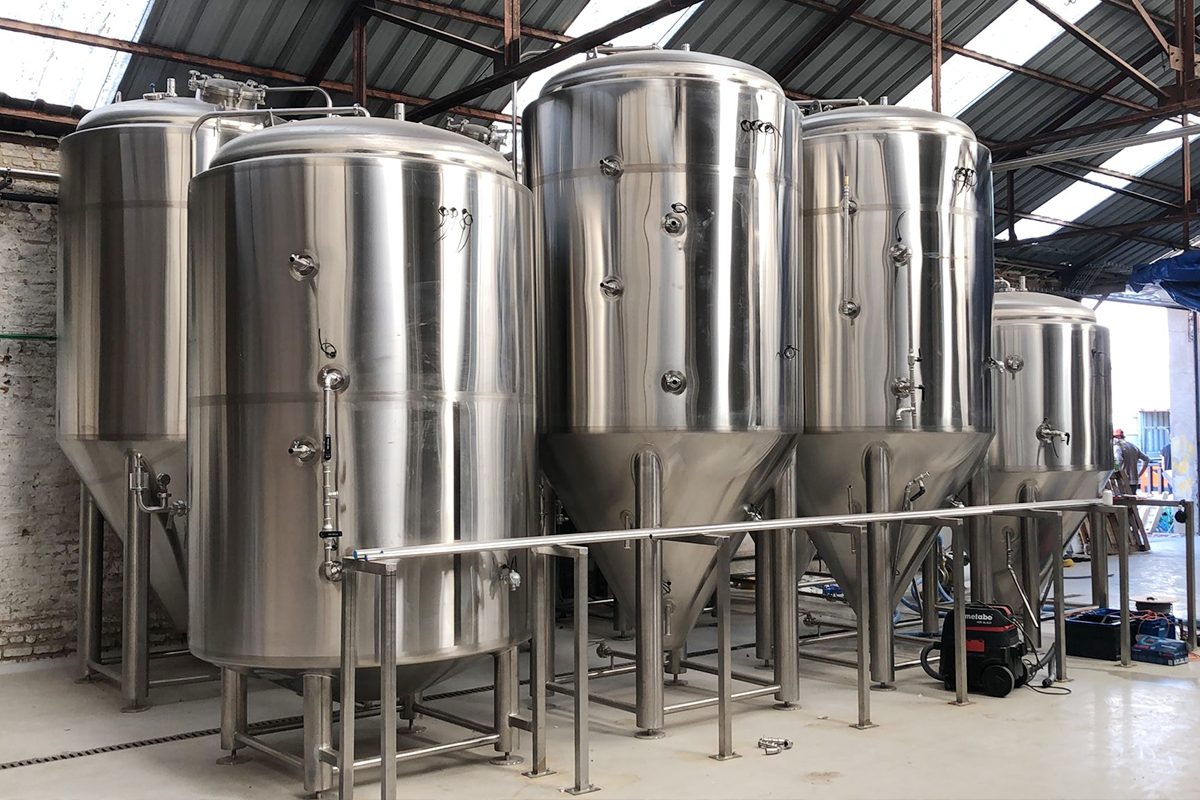
Other Factors Influenced by Tank Shape
In addition to affecting fermentation dynamics, the shape of fermentation tanks plays a key role in other aspects of brewery operations. The design of fermentation tanks impacts cleaning and maintenance, capacity and scalability, and pressure management. These factors ensure operational efficiency, safety, and long-term production flexibility.
Cleaning and Maintenance
The ease of cleaning and maintenance is directly influenced by the shape of the fermentation tank. Cylindroconical tanks, with their sloped bottoms, allow yeast and other sediment to settle efficiently at the conical base. This shape simplifies the removal of solids, reducing the need for manual cleaning and making it easier to access and clean the tank thoroughly. Tanks with a smooth interior, minimal seams, and fewer angles are typically easier to clean, which reduces downtime between batches and lowers the risk of contamination.
Horizontal tanks, while effective for slow fermentation processes, can present more challenges for cleaning due to their broader surface area and potential for sediment to spread more widely. Additional cleaning measures, such as mechanical systems or specialized cleaning-in-place (CIP) technology, may be necessary to ensure that these tanks are properly maintained.
Capacity and Scalability
Tank shape also impacts the brewery’s capacity and scalability. Cylindroconical tanks, being tall and narrow, make efficient use of vertical space, allowing breweries to maximize production even in facilities with limited floor space. This makes them ideal for scaling up production without requiring extensive alterations to the brewing setup. The vertical orientation also allows for larger batch sizes, enabling brewers to increase capacity as demand grows.
Horizontal tanks, on the other hand, require more floor space and can limit scalability in smaller breweries. However, they are often used in lagering processes, where slower, longer fermentations are required. Custom-shaped tanks offer flexible capacity options, allowing breweries to design systems that can accommodate varying production needs, ensuring both growth and adaptability.
Pressure Management
Pressure management is a critical factor during fermentation, especially in tank shapes that must withstand high internal pressures. Cylindroconical tanks are designed to handle increased pressure, making them suitable for pressurized fermentation processes or carbonated products like sparkling wines or high-gravity beers. Their conical bottom helps distribute pressure evenly, ensuring structural integrity and safety during fermentation.
Horizontal tanks typically handle lower pressure and are less suited for high-pressure fermentation. Spherical tanks, which distribute pressure uniformly due to their round shape, are ideal for products requiring precise pressure control, such as champagne or certain specialty beers. Custom-designed tanks can also be engineered to meet specific pressure requirements, ensuring the safety and efficiency of the fermentation process.
Tank shape affects not only the fermentation process but also key operational factors like cleaning, scalability, and pressure management. ZYB Craft’s fermentation tanks are designed to balance these factors, providing breweries with the tools to optimize production while maintaining flexibility, safety, and cleanliness.
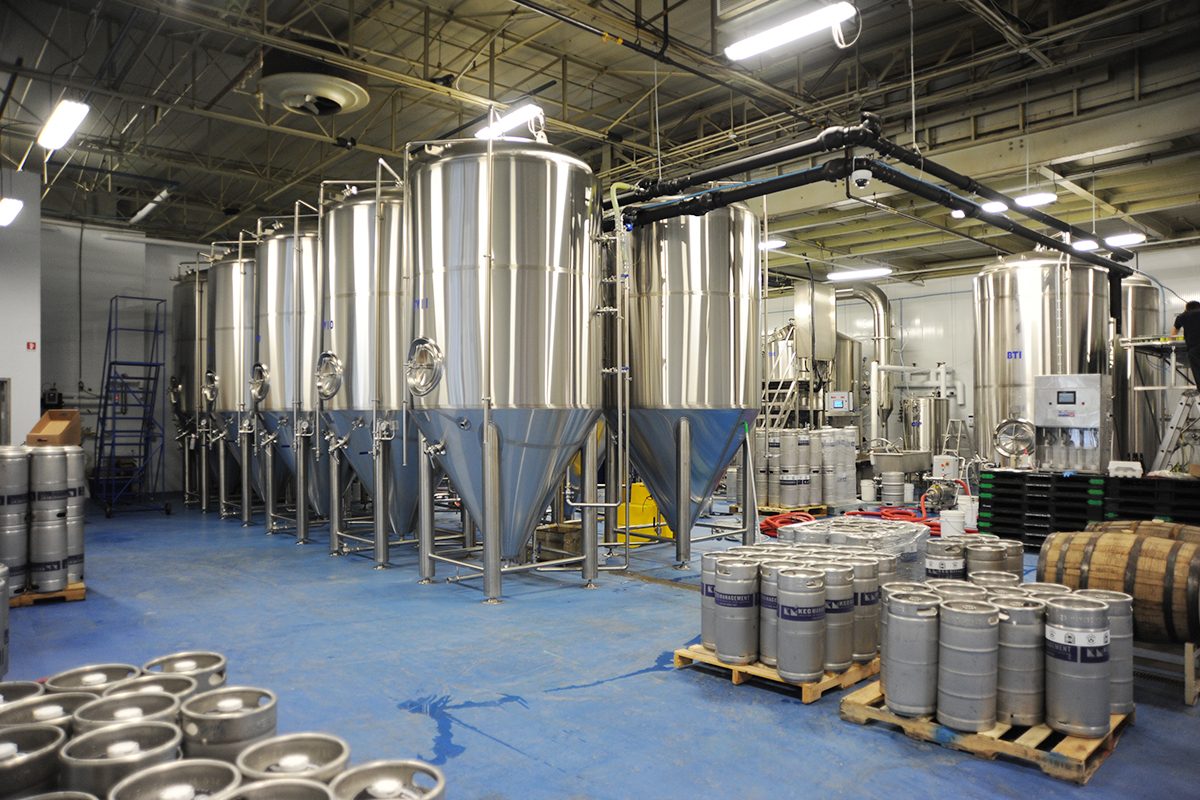
Summary
The shape of fermentation tanks has a significant impact on various aspects of the fermentation process, including yeast activity, fluid dynamics, temperature control, and pressure management. Cylindroconical tanks, commonly used for ale fermentation, promote efficient yeast sedimentation, faster fermentation, and easy cleaning, making them ideal for high-efficiency operations. Horizontal tanks, often used in lagering, offer slower fermentation and enhanced flavor development, while spherical and custom-shaped tanks can provide unique benefits for specific brewing processes.
Tank shape also affects operational factors like scalability, cleaning, and maintenance, with different designs offering advantages based on the brewery’s production goals and space limitations. Whether it’s optimizing for faster fermentation times, improving cooling efficiency, or managing internal pressure, choosing the right fermentation tank shape is crucial for breweries aiming to produce consistent, high-quality beer.
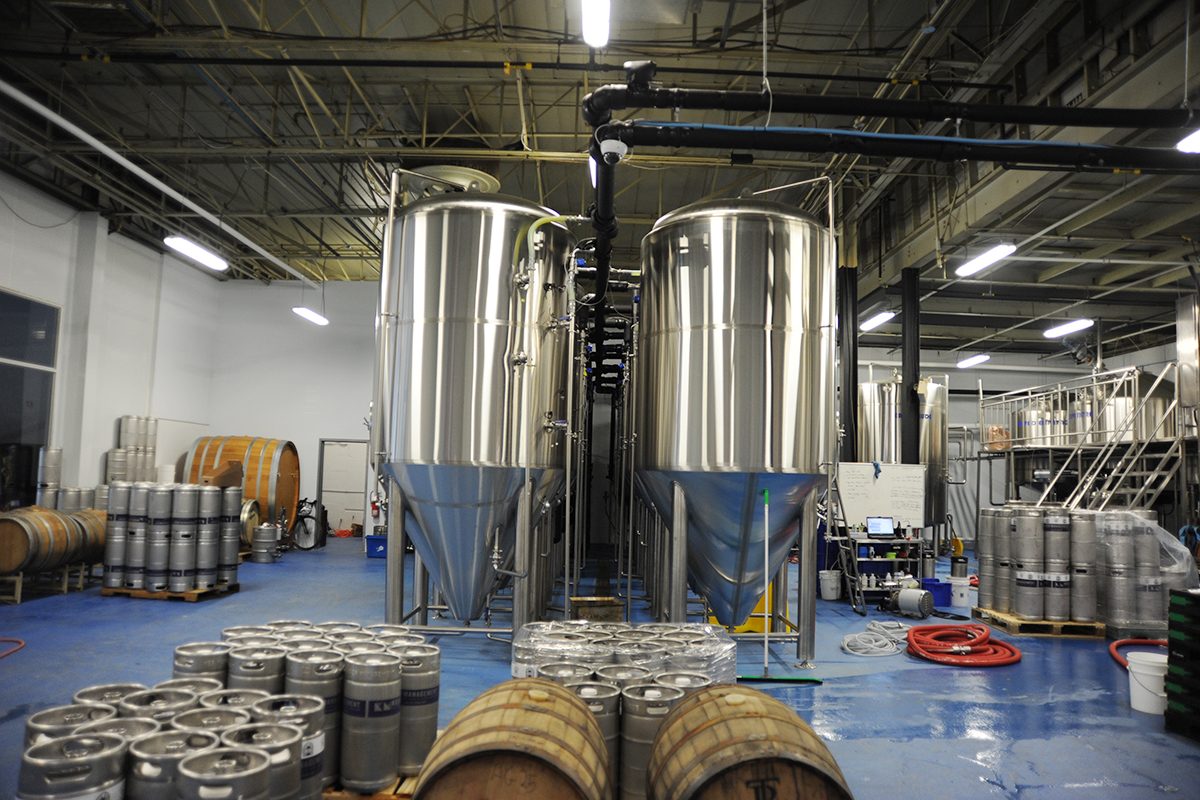
Get Turnkey Brewery Solutions
At ZYB Craft, we provide comprehensive turnkey brewery solutions designed to meet the unique needs of breweries, regardless of size or production goals. Our expertise in brewery equipment ensures that you get customized fermentation tanks, expertly designed to optimize the fermentation process based on your specific requirements. Whether you need cylindroconical tanks for high-efficiency ale production, horizontal tanks for lagering, or custom shapes for specialty brews, ZYB Craft delivers equipment that enhances the quality and efficiency of your brewing process.
From consultation to installation, ZYB Craft offers end-to-end support, ensuring that your brewery setup is tailored to your space, production scale, and beer style. Our fermentation tanks are built to industry-leading standards, offering precision temperature control, ease of maintenance, and scalability to grow with your production. With ZYB Craft’s turnkey solutions, breweries can streamline operations, improve product consistency, and meet growing demand with confidence. Let us help you build the ideal brewing environment for your craft.



